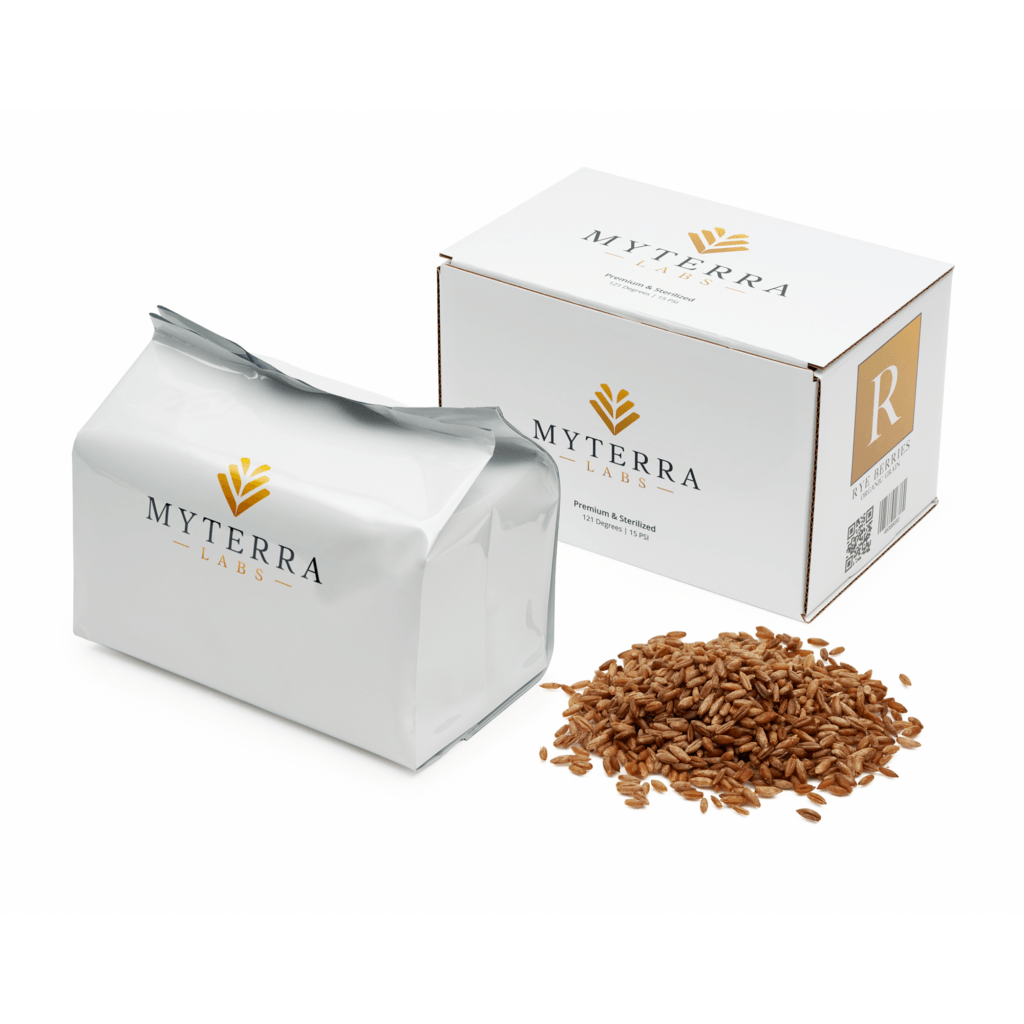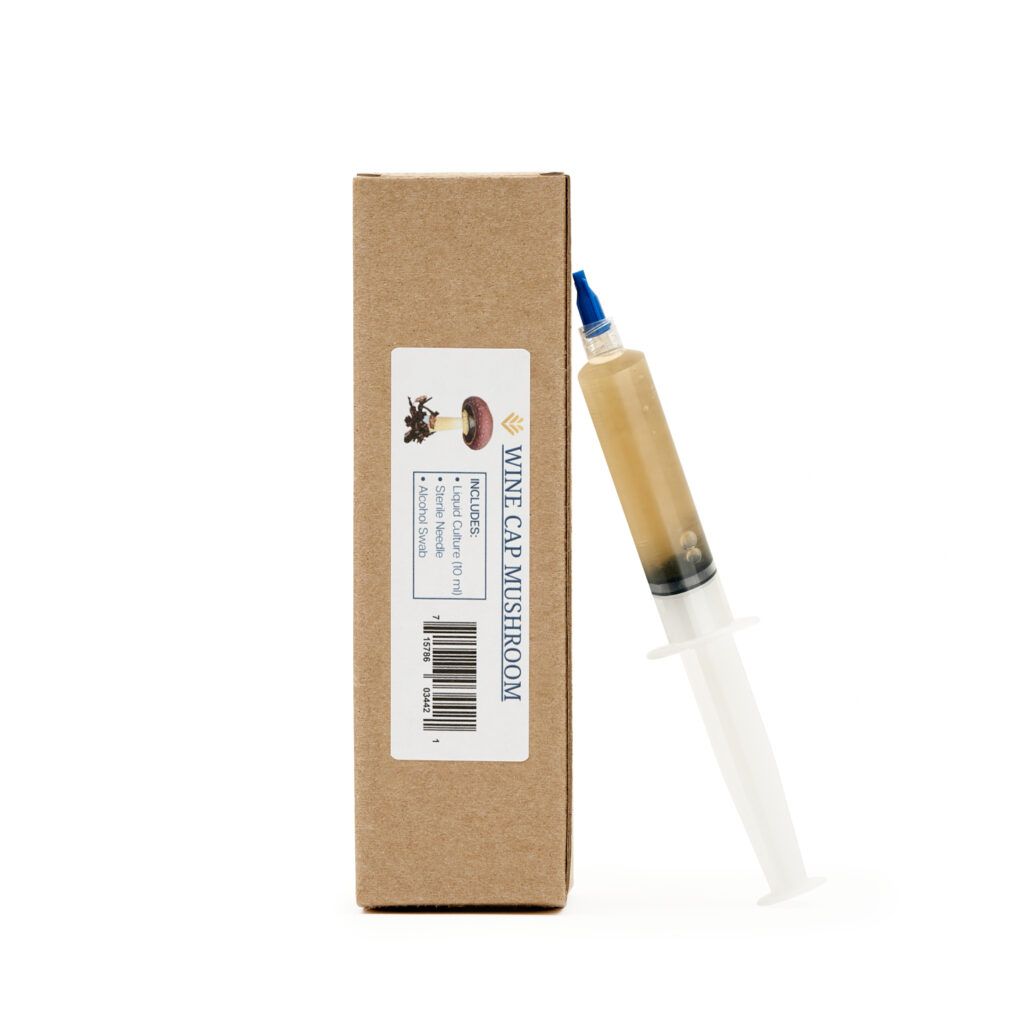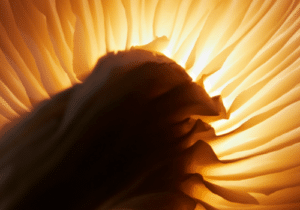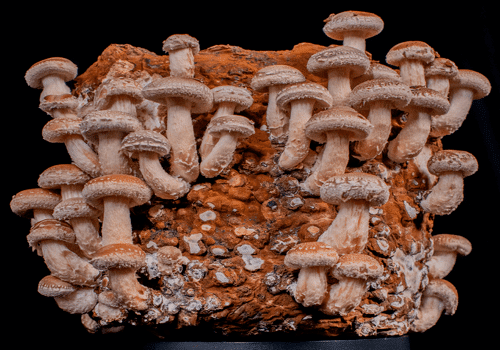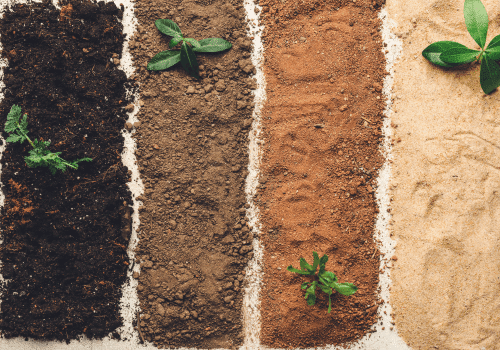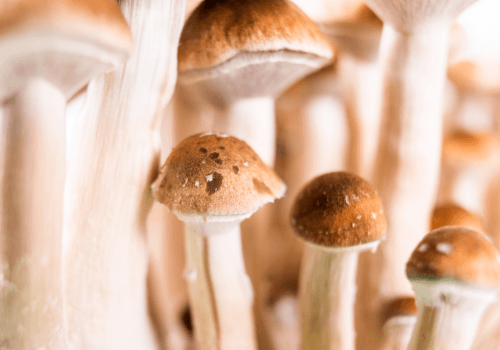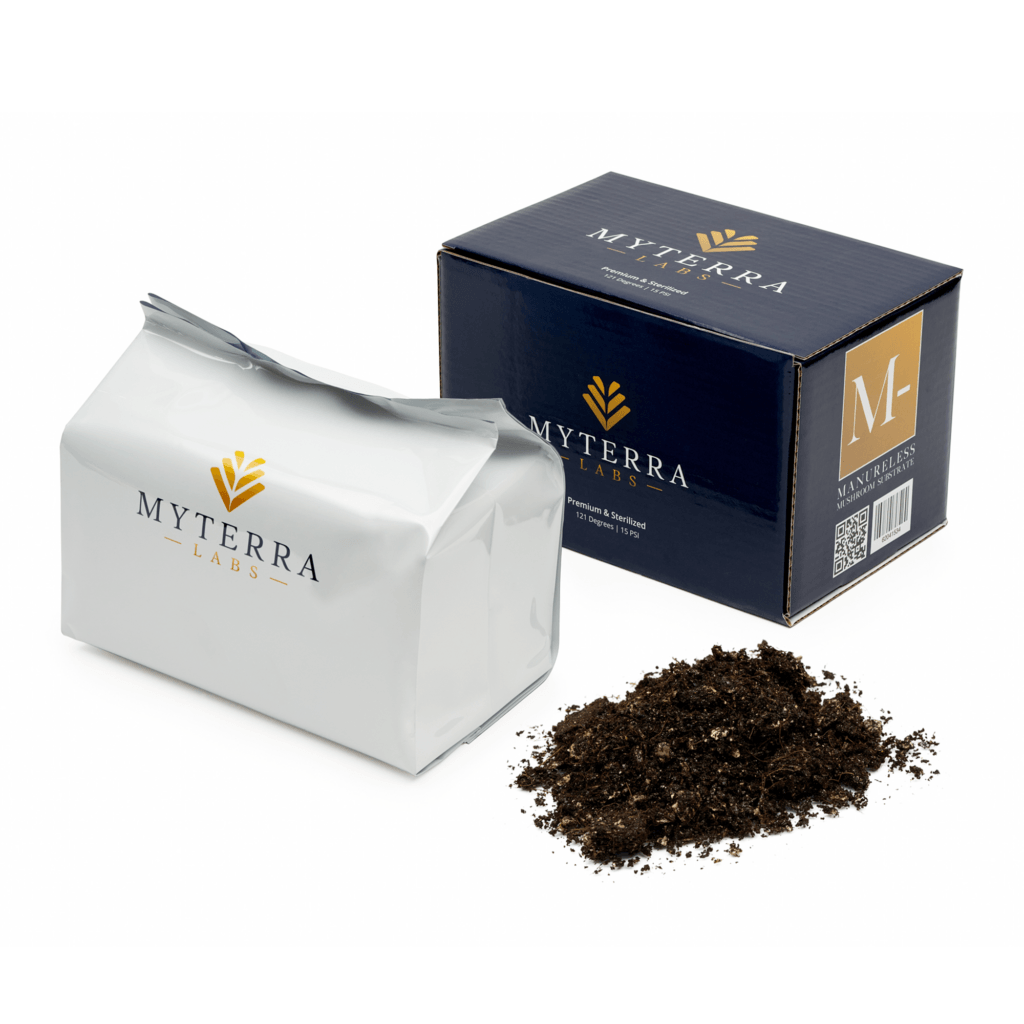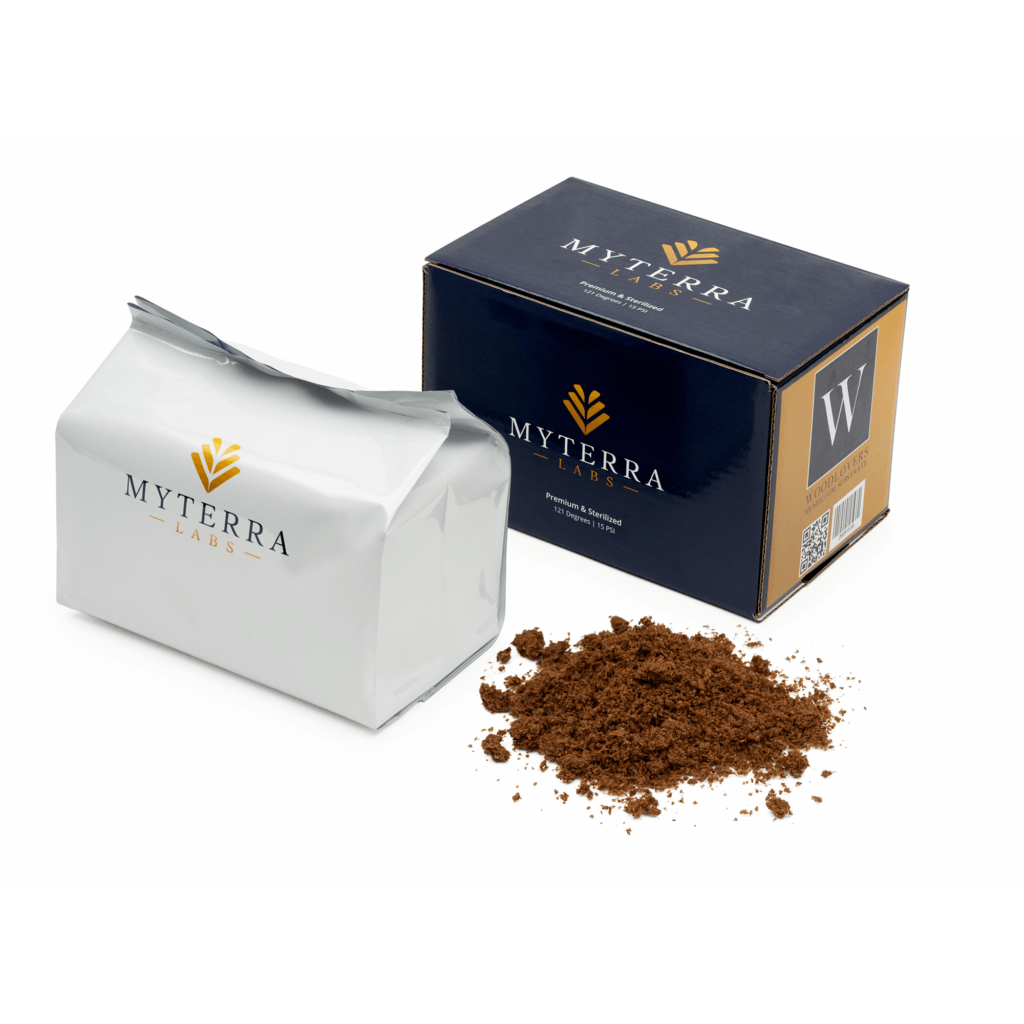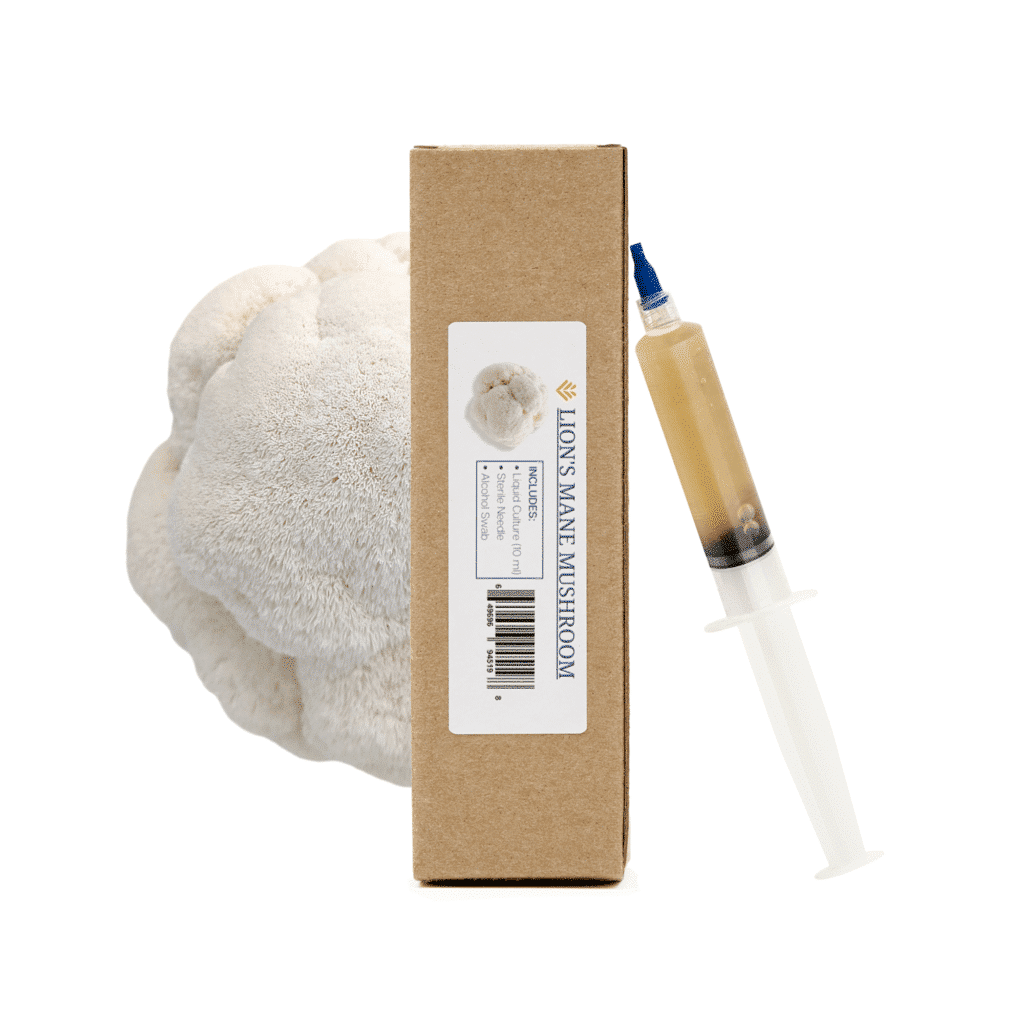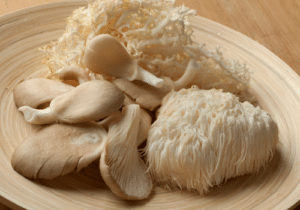
Wine cap mushrooms, also known as Stropharia rugosoannulata, are a tasty and versatile edible mushroom that can be grown in a garden bed. These mushrooms are not only delicious, but they also have the added benefit of being able to remove E. coli from the soil. In this blog post, we will guide you through the process of growing wine cap mushrooms in a garden bed, and explain the benefits of these mushrooms for both your garden and your kitchen.
What are Wine Cap Mushrooms?
Wine cap mushrooms are a type of edible mushroom that is native to Europe, but can also be found growing wild in North America. These mushrooms have a distinctive wine-colored cap and grow in clusters on wood chips or other organic material.
Wine cap mushrooms have a delicious, meaty flavor and a firm texture that makes them a popular choice for vegetarian dishes. Their flavor and size can be likened to portobello mushrooms. They are also high in protein, fiber, and essential nutrients like potassium, magnesium, and B vitamins.
Benefits of Wine Cap Mushrooms
In addition to their culinary benefits, wine cap mushrooms also have some unique benefits for gardeners. One of the most interesting benefits of wine cap mushrooms is their ability to remove E. coli from the soil.
E. coli is a common bacterium that can be found in the soil, and can sometimes cause foodborne illness in humans. While E. coli is not harmful to plants, it can be harmful to humans if ingested. Wine cap mushrooms have been found to be effective at removing E. coli from the soil, making them a useful tool for gardeners who want to reduce the risk of foodborne illness in their crops.
Another benefit of wine cap mushrooms is their ability to break down organic material and convert it into rich, nutrient-dense soil. Wine cap mushrooms are saprophytic, which means that they feed on dead organic matter like wood chips, leaves, and straw. As they break down this organic material, they release nutrients into the soil, making it more fertile and productive.
When is the best time to start a mushroom bed?
Spring, after last frost, through mid-fall, 3 weeks before first frost. The mushrooms will take between 2-10 months before you will see your first harvest of mushrooms. Spring planting typically results in a fall harvest, and fall planting typically results in summer harvest the following year.
How to Grow Wine Cap Mushrooms in a Garden Bed
Now that we’ve discussed the benefits of wine cap mushrooms, let’s get into the nitty-gritty of how to grow them in a garden bed. Here’s what you’ll need:
- Wine cap mushroom spawn (you can create your own spawn using Myterra Labs Wine Cap liquid culture and Organic Rye berries)
- Wood chips or other organic material (straw, leaves, etc.)
- Cardboard
- A garden bed with well-draining, nutrient-rich soil or compost to increase soil nutrition
- A pitchfork or other tool for mixing the spawn with the organic material
- Water
STEP 1: Choose a location
Wine caps require a well-draining, organic-rich soil to grow. Choose a location that receives partial to full sunlight and has good air circulation. The ideal soil pH for wine caps is between 6.0 and 7.5. Till the soil to a depth of 6 to 8 inches and remove any weeds, rocks, or debris. If the soil is sandy, mix in some compost or aged manure to improve its water retention capacity.
STEP 2: Make Wine Cap Spawn
Wine Cap spawn is easy to make, but does require some patience. Simply inject your Myterra Labs Wine Cap Liquid Culture into a bag of Organic Rye berries, wait for a few weeks for the white mycelium to colonize your grains until the entire bag is white, and voila! you have successfully made your own wine cap mushroom spawn.
STEP 3: Soak Straw & Cardboard
After making the spawn, the next step is to soak straw overnight in large containers. Rotate the straw to ensure that all of it is hydrated. The straw water in a herbicide, so make sure to dispose of this water in an area that is away from any prized plants. Soak cardboard in a bucket of water a few hours before starting your garden bed.
STEP 4: Create the Mushroom Bed
Find a good spot for your mushrooms bed while the straw is soaking. Choose an area that gets indirect sunlight or is in the shade. Some examples of areas are: under trees, in amongst other plants or among your vegetables. Dig a hole about 8″ to 1′ deep. The hole can be as long or wide as you would like it to be, but an ideal size would be less than than 40 sq. ft. Spread a layer of the cardboard on top of the prepared soil – this will act as a barrier to weeds and provide much-needed hydration for your mushrooms. Next, spread a layer of straw across the bed, it only needs to be 2-4″ deep. Sprinkle your grain spawn over the layer of straw. Mix the spawn with the straw thoroughly. Finally, add garden soil (and compost if needed) over the straw to complete the garden bed. Water the bed thoroughly to ensure that the bed is well-hydrated.
STEP 5: Maintain the Bed
Wine cap mushrooms require regular watering to keep the bed moist. Keep the bed covered with a layer of straw or shredded leaves to retain moisture and to prevent the growth of weeds. Wine caps can also benefit from periodic fertilization with a nitrogen-rich fertilizer such as blood meal or soybean meal. As the mushrooms grow, harvest them when they reach their mature size of 4 to 8 inches in diameter. Leave some mushrooms on the bed to drop spores and promote the growth of new mushrooms.
How do I know that my garden bed is doing well?
You can monitor the progress of your garden bed after a month by digging into the bed until you reach the straw. You should see white mycelium among the straw just like in the image below:
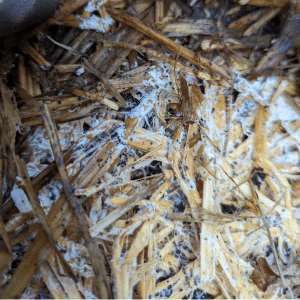
What can I expect to see in my garden bed?
When the weather conditions are just right, the mushrooms will start popping up from the soil. They will be cream to light-brown in color before turning a deep burgundy.
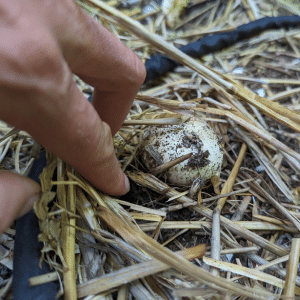
On the left is a picture of Stropharia mushrooms pushing through the straw and soil. The caps will start off as a cream-light brown color before changing into a deep burgundy color.
Over the next week, your mushrooms will grow in size and change color. Mushrooms in the shade will have a lighter colored cap than mushrooms that are partially exposed to the sun. You can harvest your mushrooms at any point, but we recommend harvesting them before any insects are able to find them.
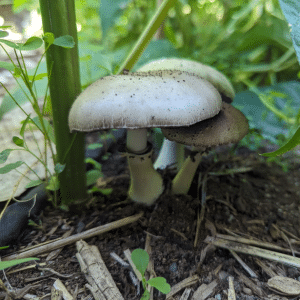
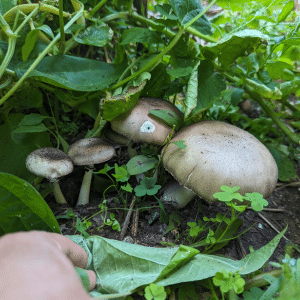
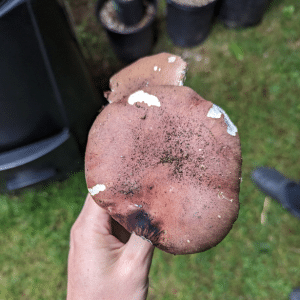
Troubleshoot Problems
If you encounter problems with your wine cap mushroom bed, there are several possible causes. Overwatering can lead to the growth of mold or the depletion of oxygen in the bed. Underwatering can cause the mushrooms to dry out and become tough. Pests such as slugs or snails can damage the mushrooms, and birds may eat them. You can cover your mushroom bed with netting to prevent larger pests from getting into the mushroom bed. If the mushrooms appear deformed or have an unusual color, they may be infected with a disease or pest.
Slugs are drawn to mushrooms in damp areas. Sprinkle salt around your mushrooms to deter them from you harvest.
Growing wine cap mushrooms in a garden bed can be a fun and rewarding experience. With a little bit of effort, you can produce a bountiful harvest of fresh mushrooms that are a great addition to salads, stir-fries, and soups. By following these steps and maintaining the bed, you can enjoy a continuous harvest of wine cap mushrooms for years to come.
You might also enjoy
SHIITAKE: Grow Kit Instructions
Substrate Compatibility Guide
PS1: Grow Kit Instructions
Featured products
Wine cap mushrooms, also known as Stropharia rugosoannulata, are a tasty and versatile edible mushroom that can be grown in a garden bed. These mushrooms are not only delicious, but they also have the added benefit of being able to remove E. coli from the soil. In this blog post, we will guide you through the process of growing wine cap mushrooms in a garden bed, and explain the benefits of these mushrooms for both your garden and your kitchen.
What are Wine Cap Mushrooms?
Wine cap mushrooms are a type of edible mushroom that is native to Europe, but can also be found growing wild in North America. These mushrooms have a distinctive wine-colored cap and grow in clusters on wood chips or other organic material.
Wine cap mushrooms have a delicious, meaty flavor and a firm texture that makes them a popular choice for vegetarian dishes. Their flavor and size can be likened to portobello mushrooms. They are also high in protein, fiber, and essential nutrients like potassium, magnesium, and B vitamins.
Benefits of Wine Cap Mushrooms
In addition to their culinary benefits, wine cap mushrooms also have some unique benefits for gardeners. One of the most interesting benefits of wine cap mushrooms is their ability to remove E. coli from the soil.
E. coli is a common bacterium that can be found in the soil, and can sometimes cause foodborne illness in humans. While E. coli is not harmful to plants, it can be harmful to humans if ingested. Wine cap mushrooms have been found to be effective at removing E. coli from the soil, making them a useful tool for gardeners who want to reduce the risk of foodborne illness in their crops.
Another benefit of wine cap mushrooms is their ability to break down organic material and convert it into rich, nutrient-dense soil. Wine cap mushrooms are saprophytic, which means that they feed on dead organic matter like wood chips, leaves, and straw. As they break down this organic material, they release nutrients into the soil, making it more fertile and productive.
When is the best time to start a mushroom bed?
Spring, after last frost, through mid-fall, 3 weeks before first frost. The mushrooms will take between 2-10 months before you will see your first harvest of mushrooms. Spring planting typically results in a fall harvest, and fall planting typically results in summer harvest the following year.
How to Grow Wine Cap Mushrooms in a Garden Bed
Now that we’ve discussed the benefits of wine cap mushrooms, let’s get into the nitty-gritty of how to grow them in a garden bed. Here’s what you’ll need:
- Wine cap mushroom spawn (you can create your own spawn using Myterra Labs Wine Cap liquid culture and Organic Rye berries)
- Wood chips or other organic material (straw, leaves, etc.)
- Cardboard
- A garden bed with well-draining, nutrient-rich soil or compost to increase soil nutrition
- A pitchfork or other tool for mixing the spawn with the organic material
- Water
STEP 1: Choose a location
Wine caps require a well-draining, organic-rich soil to grow. Choose a location that receives partial to full sunlight and has good air circulation. The ideal soil pH for wine caps is between 6.0 and 7.5. Till the soil to a depth of 6 to 8 inches and remove any weeds, rocks, or debris. If the soil is sandy, mix in some compost or aged manure to improve its water retention capacity.
STEP 2: Make Wine Cap Spawn
Wine Cap spawn is easy to make, but does require some patience. Simply inject your Myterra Labs Wine Cap Liquid Culture into a bag of Organic Rye berries, wait for a few weeks for the white mycelium to colonize your grains until the entire bag is white, and voila! you have successfully made your own wine cap mushroom spawn.
STEP 3: Soak Straw & Cardboard
After making the spawn, the next step is to soak straw overnight in large containers. Rotate the straw to ensure that all of it is hydrated. The straw water in a herbicide, so make sure to dispose of this water in an area that is away from any prized plants. Soak cardboard in a bucket of water a few hours before starting your garden bed.
STEP 4: Create the Mushroom Bed
Find a good spot for your mushrooms bed while the straw is soaking. Choose an area that gets indirect sunlight or is in the shade. Some examples of areas are: under trees, in amongst other plants or among your vegetables. Dig a hole about 8″ to 1′ deep. The hole can be as long or wide as you would like it to be, but an ideal size would be less than than 40 sq. ft. Spread a layer of the cardboard on top of the prepared soil – this will act as a barrier to weeds and provide much-needed hydration for your mushrooms. Next, spread a layer of straw across the bed, it only needs to be 2-4″ deep. Sprinkle your grain spawn over the layer of straw. Mix the spawn with the straw thoroughly. Finally, add garden soil (and compost if needed) over the straw to complete the garden bed. Water the bed thoroughly to ensure that the bed is well-hydrated.
STEP 5: Maintain the Bed
Wine cap mushrooms require regular watering to keep the bed moist. Keep the bed covered with a layer of straw or shredded leaves to retain moisture and to prevent the growth of weeds. Wine caps can also benefit from periodic fertilization with a nitrogen-rich fertilizer such as blood meal or soybean meal. As the mushrooms grow, harvest them when they reach their mature size of 4 to 8 inches in diameter. Leave some mushrooms on the bed to drop spores and promote the growth of new mushrooms.
How do I know that my garden bed is doing well?
You can monitor the progress of your garden bed after a month by digging into the bed until you reach the straw. You should see white mycelium among the straw just like in the image below:

What can I expect to see in my garden bed?
When the weather conditions are just right, the mushrooms will start popping up from the soil. They will be cream to light-brown in color before turning a deep burgundy.

On the left is a picture of Stropharia mushrooms pushing through the straw and soil. The caps will start off as a cream-light brown color before changing into a deep burgundy color.
Over the next week, your mushrooms will grow in size and change color. Mushrooms in the shade will have a lighter colored cap than mushrooms that are partially exposed to the sun. You can harvest your mushrooms at any point, but we recommend harvesting them before any insects are able to find them.



Troubleshoot Problems
If you encounter problems with your wine cap mushroom bed, there are several possible causes. Overwatering can lead to the growth of mold or the depletion of oxygen in the bed. Underwatering can cause the mushrooms to dry out and become tough. Pests such as slugs or snails can damage the mushrooms, and birds may eat them. You can cover your mushroom bed with netting to prevent larger pests from getting into the mushroom bed. If the mushrooms appear deformed or have an unusual color, they may be infected with a disease or pest.
Slugs are drawn to mushrooms in damp areas. Sprinkle salt around your mushrooms to deter them from you harvest.
Growing wine cap mushrooms in a garden bed can be a fun and rewarding experience. With a little bit of effort, you can produce a bountiful harvest of fresh mushrooms that are a great addition to salads, stir-fries, and soups. By following these steps and maintaining the bed, you can enjoy a continuous harvest of wine cap mushrooms for years to come.
You might also enjoy
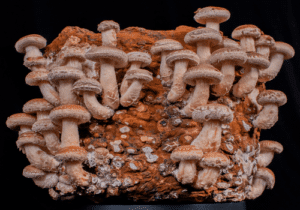
SHIITAKE: Grow Kit Instructions
Learn how to grow Shiitake mushrooms using the Myterra Labs
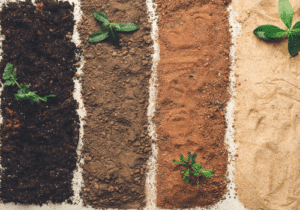
Substrate Compatibility Guide
Selecting the right substrate is a key element in successful
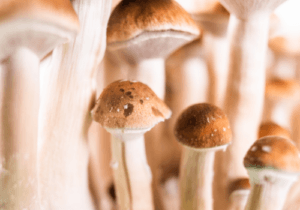
PS1: Grow Kit Instructions
Welcome to the enchanting realm of our All-in-one Grow Kit,

